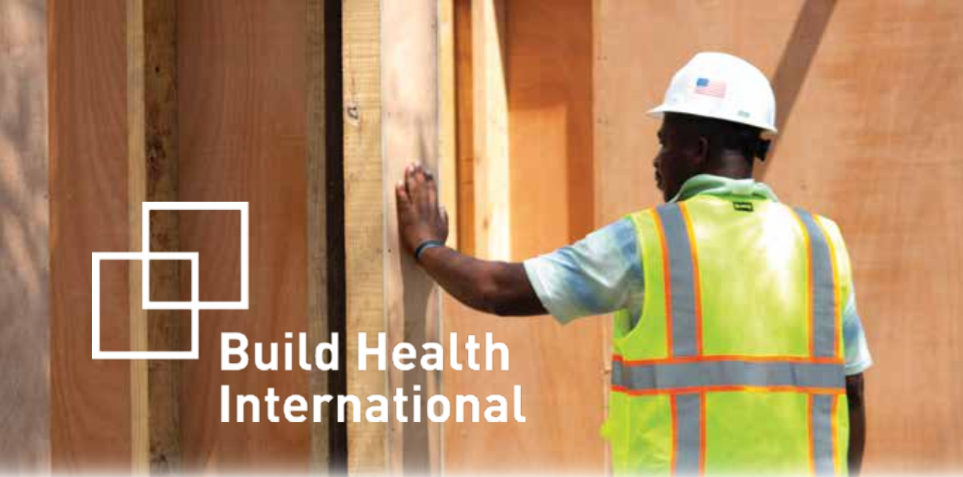
Build Health International (BHI) is an organization based in Beverly, MA. Their mission is to promote global equity by creating high-quality health infrastructure for low resourced regions around the world. The organization uses the expertise of architects and engineers to create infrastructure and design plans that deliver sustainable and high quality healthcare, in partnership with direct care global health organizations. When the COVID-19 pandemic hit this year, they had to consider how to address the spread of the virus while considering additional structural barriers and ongoing health issues the communities they work in face. I met with Ela Hefler, BHI’s Development and Communications Specialist, and Darby Kirven, their Development and Communications Manager, to discuss BHI’s COVID-19 response and its implications for the entire global health sector.
The organization began by advocating for the possible severity of the virus in February and March through public communications and discussions with their partner organizations. Hefler and Kirven explained how they initially struggled establishing urgency and finding common ground with their partner organizations in forming an effective approach, especially due to funding constraints. After many conversations with their partners, the organization was able to direct their focus to providing their services to their partners and the global health sector as effectively as possible. This led to their COVID-19 response focusing on two main areas: making their knowledge and expertise on infrastructure accessible to as many organizations as possible and responding directly to their partner organizations' expressed needs.
Providing more access to resources on healthcare infrastructure: BHI created open access resources for their infrastructure design plans on their website. In the past they had provided this information only through direct consulting, but to respond to the urgent need for emergency planning, they adapted their materials into more general information that other organizations could easily adapt to their needs. These resources include structural plans for adapting healthcare infrastructure to limit infection, such as plans for building patient screens, PPE guidance for low-resource settings, and coronavirus treatment center plans. Hefler stated that they have received feedback from these resources that has allowed them to expand their original plans to produce new ones. An example of this she cited was with one of their partners in Uganda who helped them design a treatment center plan that included one central staff room, instead of their usual two, in order to increase bed capacity. Adaptations such as this have helped BHI to generate new materials and expand the applicability of their resources, creating new partnerships for the organization and further expanding their impact.
Addressing the particular needs of other organizations: This has included executing their coronavirus treatment center plans with their organizations. Hefler said she has been very impressed with the rapidity of the building of these centers. She attributes the success of this to the dedication of their construction teams, such as the team at St. Boniface Hospital in Haiti. Beyond building specific treatment centers, BHI has worked to create greater oxygen capacity at healthcare facilities with the virus’ attack on the respiratory system. Hefler and Kirven described how BHI has worked closely with Hospital Universitaire de Mirebalais (HUM) in Haiti, where originally only ½ of beds had oxygen capacity. BHI worked with their partners there to scale up the facility so that now nearly 100% of beds hold oxygen capacity. The need for increased oxygen capacity has been a need felt across their partners, so the organization has focused on developing plans and funding for oxygen systems that are both cost and time effective.
Hefler and Kirven explained that many of the challenges they have faced in their response have aligned with the structural barriers of low resource settings. Hefler stated many of the facilities they work at have tight budgets, low bed capacity, and low testing capabilities, so they had to include these constraints within their design plans.
For example, their team developed 2 different treatment center design plans, one for centers with testing capability and one for those without. Both designs focused on creating mitigating factors for infection spread such as bed spacing, increasing airflow and ventilation, and adding patient screens while still working to increase patient capacity. The designs differ in their bed spacing and patient capacity to account for differing testing capacities.
Recognizing the distinct barriers and balancing the pandemic with other issues communities may be facing have been key components to effectively targeting the needs of healthcare systems in low resourced regions. Hefler described how understanding the context of other issues such as food insecurity, poor water and sanitation systems, and highly dense populations has been vital to their response as these issues eliminate the option of social distancing to mitigate spread and point to the importance of infrastructure. Kirven also mentioned how low resource regions often have a shortage of healthcare facilities, leaving most centers serving above their patient capacity and providing primary, secondary, and tertiary care all in one place. This contributes to the rate of infection with all patients sharing the same facility, creating further challenges for infrastructure. She also explained how these regions have been impacted by the actions of developed countries during the pandemic, such as the United States stopping their exports of important resources such as PPE. These challenges point to the importance of addressing these issues in order to effectively address the spread of COVID-19 and facilitate improved health outcomes for their partners through infrastructure.
––––––––––
About the Author: Dorothy Goodwin is a rising senior Public Health and Spanish honors student at the University of Massachusetts Amherst with a concentration in Sustainable Global Health Development. She is passionate about promoting global health equity with a specific interest in maternal and child health issues, and plans to pursue a career in global health and international development after graduation.
All views expressed in the foregoing post are the author’s own and do not purport to reflect the opinions or views of the Boston Network for International Development (BNID) or its members or sponsors.
